The Royal Marine Operational Shooting Competition (RMOSC) has one standout feature: competitors are required to carry 31 pounds of gear. Royal Marine Reservist Cpl Al Kendrick won this year’s RMOSC edition – thanks, in part, to the smart load distribution features of SOURCE Virtus.
SOURCE Tactical Gear is all about providing you with smart and excellent gear enhancing your performance, lessening burden, reducing stress and enabling you to go further and achieve best possible results. Last week, Cpl Al Kendrick, Royal Marine Reservist and one of the Virtus Fielding Instructors for the UK Armed Forces, excelled in what he does: winning the prestigious Royal Marine Operational Shooting Competition (RMOSC) – utilizing VIRTUS to carry the required 31 pounds of gear.
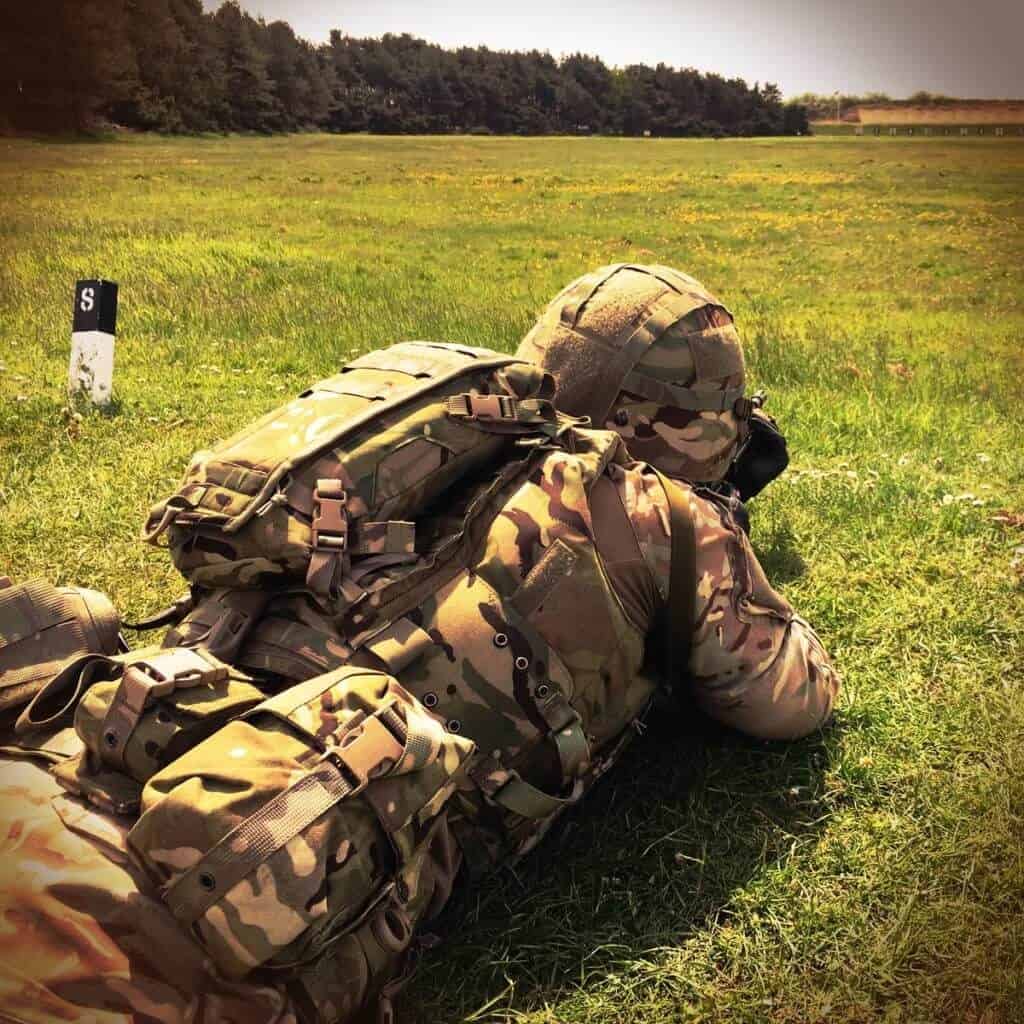
100M Sprints, Stretchers and a 1.5 Mile March …
The different stages and shoots in the two-week RMOSC involve 14 pistol and rifle shoots, replicating different combat scenarios, some more some less physical, involving different types of targets and directives. In all of the shoots, participants are required to carry armor, helmet, webbing and gear weighing in at over 30 pounds.
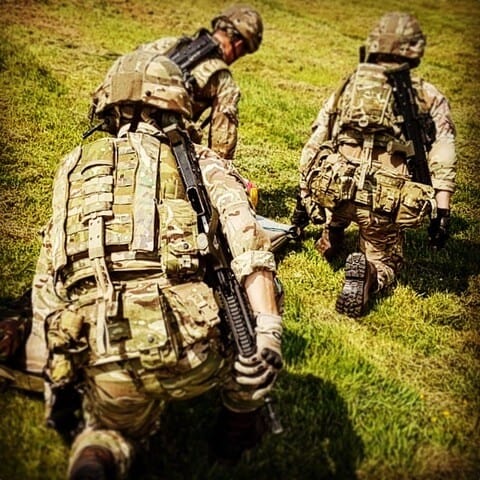
Advantage: VIRTUS Soldier System with DWD Load Distribution
“The VIRTUS Tactical Vest in combination with the DWD Load Distribution System was definitely a massive advantage over older gear” Cpl Kendrick confirmed after his win. VIRTUS gives you “more range of movement and the weight is spread almost unnoticeable around the body”. Also the possibility to easily shift weight from shoulders to hips and back – depending on mission, situation and position – adds freedom of movement and comfort.
Congrats Al from all of us at SOURCE for the outstanding achievement, we’re proud to have you as a member of the Virtus team!
SOURCE Hydration supports this year’s US Adventure Racing National Championship in October and its qualifier races. Best of luck to all participating teams, stay hydrated!
Adventure Racing is definitely one of our favorite sports, with new teams and new races popping up all around the globe. The United States Adventure Racing Association (USARA) was created in 1998 to develop safety standards and ecological standards, and to provide guidance and assistance for race directors so they may conduct fun, safe, and fair events while providing for the continued sustainability of adventure racing.
Ranking and National Championship 2014
The USARA National Ranking System and the annual USARA Adventure Race National Championship have continually elevated the sport in the last years. This year, several dozen regional qualifying races throughout the US are open to the teams going for glory – or just for the challenge of finishing the race. Adventure Racing is definitely one of the few sports where you’re not mainly fighting your competition, but more often fighting yourself not to give up and to get to the finish line.
The USARA has served over 2500 national events and is focused on the continued positive growth of the sport of adventure racing. We are proud to support this effort with SOURCE Hydration in 2014 and we’re looking forward to many exciting races leading up to the Championships October 2-4 in Deep Creek Lake, Maryland.
More about USARA:
More Adventure Racing with SOURCE:
- Team Haglöfs Silva – Aventure Racing with SOURCE Hydration
- Adventure Racing World Championships in Costa Rica
He finished the Sahara Ultra Marathon and covered around 80 marathons in 66 days on the Apalachian Trail. After that it took him three years to fully recover and rebuild strength. Now Carlos is ready for the 1,000 km Israel National Trail – again.
“Every time I promise my family it’s the last one,” tells us Carlos Goldberg when we meet him days before he’s starting his next last one, the 1,000 km Israel National Trail. He already covered the trail north-to-south in 2007 and still holds the record of 12 days. This time he’s running home: From Eilat in the South to the end of the trail close to his family’s house at Israel’s northern border. He should make it right in time for his 60th birthday-party. By coincidence, the Israeli Society for the Protection of Nature, the organization responsible for the Israel National Trail, celebrates its 60th anniversary this year as well. Many good reasons to celebrate, but first it’s sweat and pain for Carlos, anxious days of waiting for his family.
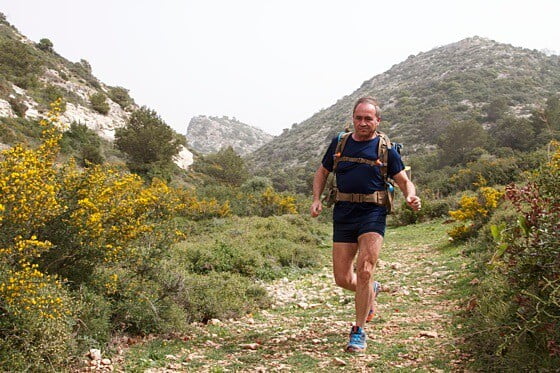
In the 80s Goldberg played major domestic tennis tournaments. Not that tennis is a very ‘social’ sport, but when he discovered the solitude of running, he was hooked. He ran marathons for some years but realized he was not in it to race the others in the field. Ever since, he’s been running alone. He’s not fighting competition, but fighting for every single nearly impossible next step. “It was 66 victories in a row,” he says about his 66 days Appalachian Trail adventure.
He runs without a support team. Nobody’s waiting for him at the end of the day. He has no pre-set milestones. For his INT Run he’s planning to stay on trail for the full distance, not changing clothes – and not showering, as he confirms. He’s carrying a SOURCE Double D Pack with minimal equipment: A mat for the short nights and daytime-naps. A sleeping bag with a cover. One extra shirt. One extra pair of tights. A little stove to heat up instant-food he’s carrying. Some gels to fuel up on energy. Two SOURCE Durabag Hydration Systems for water-supply. He’s packing one pair of extra socks. “But for the last days,” he says, “I can’t change socks, because the fabric gets stuck in my open wounds.” Running a minimum of 16 hours a day – “on trail I’m either sleeping or moving” – he saves himself every gram of extra weight. Still, the pack will be around 13 kg.
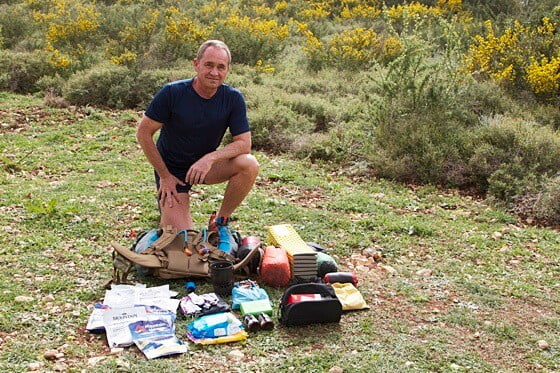
The biggest pouch in his pack holds his medical supply. As a trained paramedic he’s his own nurse, pharmacist and surgeon on the trail. The shoes he’s wearing are 2 sizes too big to accommodate the swellings and bandages he’ll need during his 15 day run. Constant bleeding and nails falling off are just some of the details he provides. “I’m not showing my feet to anybody,” he says.
Why he does it? Carlos is not the type to come forward with anything mystical or sprititual: “Others collect stamps. Everybody has something. For me it’s running. To excel at this.” During the long talk we have with him, the only time he says “I’m worried” is when he talks about his sons insisting to come and meet him in the desert with their Jeep. He’s worried his sons will get lost or something.
He calls the INT a “hostile” trail after talking about rattlesnakes, hallucinations and a drop off a 10 meter boulder on his Appalachian Trail adventure. He definitely kept a sense of respect. The last weeks before the start he has been exercising 8, 9 days without a day of rest, 20 to 25 km a day, the heavy pack on his back – on the treadmill in his gym. He hasn’t run without his pack for months. “It’s all about getting the body used to the load”, he says.
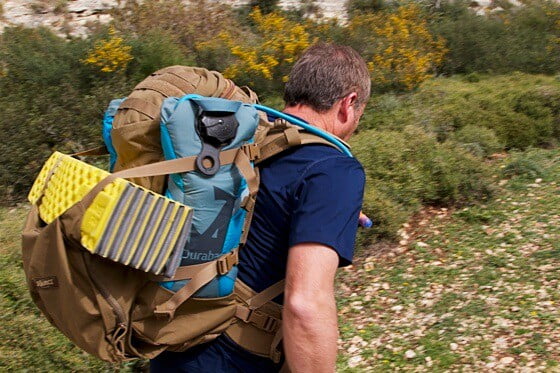
He runs without a watch and without a GPS to show him the way. His approach is in many ways different from Richard Bowles’ INT Run that we supported and covered here exactly a year ago. The Australian based Adventure Runner Richard Bowles did take Carlos’ 12 days record as a benchmark – but he approached the trail South To North, just like Carlos now. “It’s much harder to run south to north,” Carlos says. He is not after his own North-to-South record time of 12 days. His goal this time: to do it in 15 days. And he has this deadline: His 60th birthday party at home.
We’ll cover his run from March 26 in the SOURCE Outdoor Blog and on our Facebook Page.



 Facebook
Facebook google
google